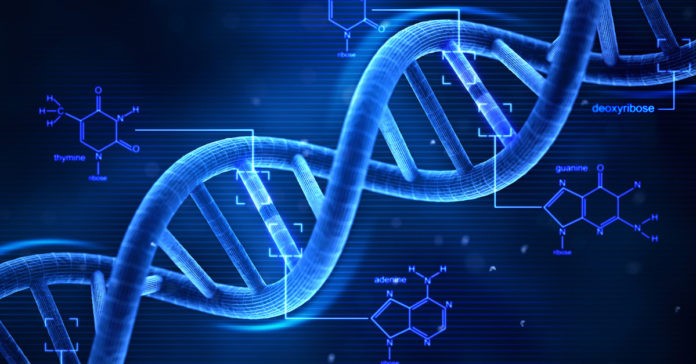
Mutations in the BRCA2 gene are well known to increase the risk of breast and ovarian cancers. Hoping to better understand the structure and mechanisms of the protein encoded by this gene, researchers from the UK have created the first-ever pictures of the BRCA2 protein, which the investigators say could pave the way for treatments targeting BRCA2 gene mutations.
The research team, led by Dr. Xiaodong Zhang of the Department of Medicine at Imperial College London, published their findings in the journal Nature: Structural and Molecular Biology.
Around 45% of women who have a BRCA2 gene mutation will develop breast cancer by the time they are 70 years old, compared with 12% of women in the general population. BRCA2 mutations are also associated with a heightened risk of ovarian cancer; while just the prevalence of ovarian cancer is just 1.4% in the general population, it ranges from 11-17% among women with a BRCA2 gene mutation.
Unfortunately, it has been challenging to develop treatments that target BRCA2 gene mutations, as they are still not well understood. Researchers know the BRCA2 protein plays a part in DNA repair. Any mutations in the gene that encodes the protein can hinder this repair process and cause cancer. But, the mechanisms behind the DNA repair activity of BRCA2 and the structure of the protein have remained a mystery – until now, at least.
Findings ‘improve understanding of a fundamental cause of cancer’
In the new study, the researchers analyzed the biochemical and structural characteristics of full-length (3,418 amino acid) BRCA2 proteins. The team was surprised to find that the BRCA2 proteins work in pairs, and that each pair works with another protein called RAD51.
RAD51 molecules convene on strands of broken DNA with the help of the BRCA2 proteins. The RAD51 molecules then form filaments that look for matching DNA strands that will repair the broken DNA.

Researchers have created pictures of the structure and mechanisms of the BRCA2 protein for the first time, which could open up a new line of treatment targeting the harmful mutations.
Furthermore, the researchers discovered that each pair of BRCA2 proteins attach to two sets of RAD51 molecules that point in opposing directions. They explain that this is so the RAD51 molecules can repair broken DNA strands that face either direction.
In addition, the team found that the BRCA2 proteins assist the RAD51 molecules in forming short filaments on numerous DNA regions. They say this may be to boost efficiency in finding matching DNA strands.
From their findings, Dr. Zhang and his team have created a set of pictures detailing the shape, structure and mechanisms of the BRCA2 protein.
“This study improves our understanding of a fundamental cause of cancer,” says Dr. Zhang. “It’s our first view of how the protein looks and how it works, and it gives us a platform to design new experiments to probe its mechanism in greater detail.”
The team hopes that this new model will play a role in the prevention and treatment of cancers associated with BRCA2 mutations. In addition to breast and ovarian cancers, BRCA2 mutations have also been linked with an increased risk of cancers of the prostate, pancreas, fallopian tubes, and skin (melanoma). Just last month scientists discovered that mutations of this gene are also associated with a higher risk of salivary gland cancer.
Understanding the mechanisms underlying the cancer-causing properties of BRCA2 mutations may pave the way for new targeted treatments of BRCA2-related cancers, though further work is needed to get there, the researchers say.
“Once we have added more detail to the picture, we can design ways to correct defects in BRCA2 and help cells repair DNA more effectively to prevent cancer,” adds Dr. Zhang. “We can also think about how to make the repair process less effective in cancer cells, so that they die.”
